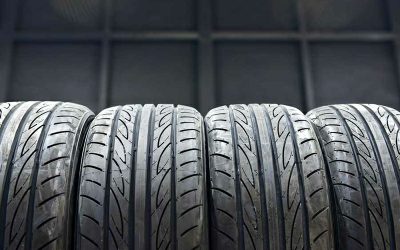You might come across the term UTQG rating while looking for tires. But what is the UTQG rating on a tire? What do you need to know about this rating system to pick out quality tires?
What Does UTQG Mean In Tires?
UTQG abbreviation stands for Uniform Tire Quality Grade. The Department of Transportation established this tire UTQG code to assist customers in evaluating tires based on temperature, tread wear, and traction.
How Does The UTQG System Work?
The UTQG rating’s primary function is to help consumers compare and rate tires based on tire tread wear, tire traction and temperature ratings.

Tread Wear
This rating denotes the tread’s wear rate. The test covered a distance of almost 6213.712 miles. The index’s value ranges from 60 to 620, with the baseline index at 100.
- A tire with a wear index of 50 may degrade significantly faster than a tire with a 100 index.
- A tire with an index of 150 may degrade 1.5 times slower than a tire with a 100 index.
For instance, consider a tire with a uniform tire quality grade (UTQG) of 300 AB. The 300 indicates tread wear, which compares the tire’s wear to the government-mandated tire UTQG code at 100. As a result, the 300-rated tire would last three times as long as the reference tire.
Nevertheless, do not associate tread-wear of tire rating UTQG with estimated tire mileage. Tire performance is based on the current usage conditions, service procedures, environment variances in road characteristics or driving behaviors.
Finally, the higher the tread-wear rating, the greater the tread life of the tire. There are three categories of tread wear rating: (A) superior, (B) good, and (C) average.
However, this rating is simply a relative comparison between the rated tire and the reference one. It’s not tell us exactly how long the tire would last.
We found the tread wear guarantee in miles from the tire manufacturer is more helpful for most customers. It serves as an excellent barometer because the producer is obligated to pay if there’s any quality issues happening to the tire within the warranty period.
Traction
This index measures the level of traction of the tire. The shorter the braking distances, the greater your traction rating.
The majority of ultra-high-performance tires receive the highest grade: AA. Many standard car tires receive the next highest A rating; under 22% of tires receive a B grade, and only one out of over 2,400 models gets a C grade.
However, we strongly advise purchasing a tire with a traction rating of at least an A. Heat is a major cause of tire damage over time. As a result, a tire with such
Temperature
a high heat rating will endure heat more effectively than one with a lower value.
The tire temperature rating codes mean the tires’ capacity to dissipate heat build-up. The ratings go from A to C, with C being the lowest.
Around a third of the tires receive the maximum rating of A, followed by 59 percent obtaining a B grade and approximately 11 percent receiving a C grade. It would help if you searched for a tire with a B or higher rating of tire temperature resistance.
Final Thoughts
We believe that when purchasing a tire, car drivers require more accurate information about tire specifications and performance.. Tire UTQG code is helpful to some extent, but it does not fully reflect on-road performance of a tire. Anyway, we hope this detailed explanation about UTQG tire rating can assist you in making the right decision while shopping for a tire.








